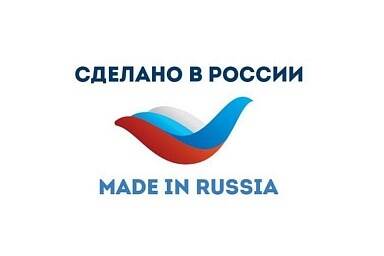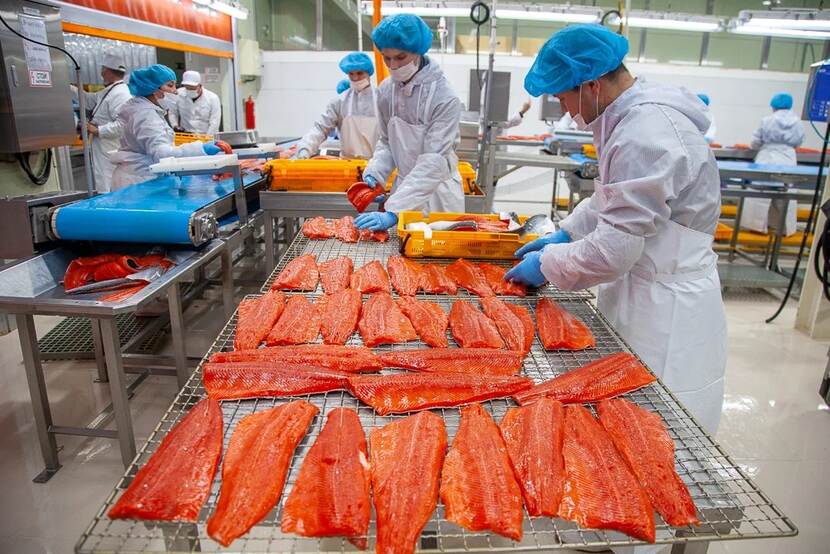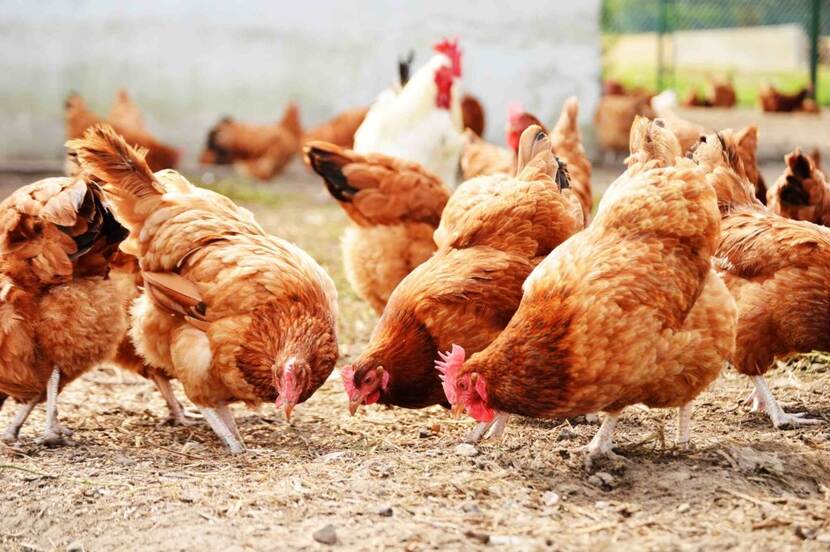Overview of Russian Agribusiness Sector #5
Highlights of the Russian Agribusiness sector prepared by the Office of Agricultural Counsellor of the Embassy of the Kingdom of the Netherlands in Moscow - 12 May 2021.
Russia rose to 17th position among global agricultural product exporters in 2020

Russia rose to 17th position among global exporters of agricultural products in 2020, two places higher than in 2019.
The leaders in the ranking are the United States with $149.4 billion, the Netherlands with $110.3 billion, and Germany with $85.5 billion.
In 2020 Russia had exported agricultural products for $30.7 billion, up 20% from the previous year. Exports of oil and fat products grew 22% to nearly $5 billion, of grain - 29% to $10.3 billion, of meat and dairy products - 37% to $1.2 billion, and of food and processing industry products - 13% to $4.5 billion, fish exports had declined, the main reason for which was closure of restaurants due to the pandemic.
Exports had grown to all major importing countries, including to China and Turkey by 26%, to the European Union by 13%, to Kazakhstan by 12%, and to Egypt by 33%. Growth in exports of wheat was provided through increased supplies to Egypt, Turkey, Pakistan, and Sudan; of sunflower oil - to China, India, and Turkey; of pork - to Vietnam and Hong Kong; and of poultry meat - to China.
Amid a post-pandemic world it is necessary to seek new niches and markets and ensure that Russian products correspond to the requirements of foreign consumers. In the grain sector, there is the task of ensuring standardization and raising the quality and level of phytosanitary safety of products. For the meat industry, the matter of opening new markets remains current, primarily the Chinese one for pork supplies. In the oil and fat sector, an important task is consolidating volumes to form export cargoes. For the processing industry, the most acute issue now is supporting product promotion; this really concerns producers of confectionary and dairy products, vegetable oil, and other types of products. The dairy industry is faced with the task of increasing production volumes, including for dried milk products. Development of fish exports will be facilitated by an increase in the catch in distant waters and development of fish processing, which has become particularly relevant amid difficulties with supplying fish to China.
Russian fishing industry expected to process 60-70% of catch domestically by 2024

The program of investment quotas that Russia launched in its fishing industry in 2017 will make it possible to significantly decrease exports of unprocessed fish and reduce the dependence on the processing facilities of other countries, foremost China, by increasing the share of the fish catch processed inside Russia to 60-70% by 2024, Federal Fisheries Agency head Ilya Shestakov said.
He is quoted as saying that strategic objective is to process raw materials on Russian shores. Under the program, 24 processing plants will be built, 55 new fishing vessels and 35 crab fishing vessels. This program will enable us to process 60-70% of the catch ourselves on Russian territory by 2024.
The implementation of the second phase of the investment quota program will begin in 2022.
Speaking about the situation with fish exports to China, which have been shut down since the end of 2020, Shestakov said negotiations have been "fairly difficult."
China stopped accepting foreign vessels with fish due to prevent the spread of Covid-19.
But on the other hand, this situation has led to Russian fishing companies diversifying shipments, actively working with ports in Japan and South Korea and opening up new niches and markets. Plants in the Far East with processing capacity for 300,000 tonnes of fish per year have joined these efforts, Shestakov said.
He also said that the industry is steadily moving in the direction of digitization. "We are The transitioning to electronic fish control systems is under way. These are electronic fishing logs, the issue of fishing permits in electronic form. The possibility of introducing video recording of vessels is discussed with the Border Service so that control is remote. This creates the possibility of total control, which is very important.
Senators asked the Ministry of Agriculture to give flower growers the right for preferential loans

The Federation Council Committee on Budget and Financial Markets proposed to the Ministry of Agriculture to grant flower growers the right to preferential short-term loans. The floriculture development program should define a list of measures of state support for Russian flower producers and the conditions for its provision.
It is proposed to develop a floriculture development program by May 20, 2021. It is assumed that measures to support the flower business will be included in the budget expenditures for 2022.
Tamara Reshetnikova, General Director of the Growth Technologies company, said that the domestic floriculture industry has been stagnating for about 10 years. New serious complexes do not appear; at best, bankrupt enterprises are being replaced with new greenhouses. The expert also noted that the volume of flower production in Russia has been at the same level for many years. The main problem is low effective demand. Due to the growth of the dollar and euro exchange rates, imports are becoming more expensive every year, and the volume of the market in physical terms does not change.
The expert noted that some changes are now being observed within the assortment. So, if earlier the rose was the favorite of all consumers, now there is a transition towards other flowers, starting from chrysanthemums and gerberas, ending with more exotic ones, such as eustomas, orchids, and so on. However, exotic flowers are not grown in our country at all, they have to be supplied from abroad, Reshetnikova noted. The only segment of the industry that is developing in Russia, and where production has doubled over the past five years, displacing imports, is spring tulips. Their cultivation does not require serious investments in the equipment of the greenhouse complex, for them there are only a few heated greenhouses. The only thing that is needed are high quality flower bulbs. So far there are no alternatives for domestic production of bulbs.
She also clarified that now flower growers do not receive state support. Concessional loans are not available to flower growers, although theoretically some companies can negotiate with banks with a good credit history. Reshetnikova believes that stimulating consumer demand will help change the situation.
Russia sees strongest poultry production decline in a decade

In the first 2 months of 2021, Russian poultry production dropped by 6.2% compared to the same period of the previous year.
Sergey Lakhtyukhov, general director of the Russian Union of Poultry Producers, said that there wasn’t such a drop in over a decade. The Russian poultry industry is impacted by several factors. First, there is a sharp rise in production costs. The price for some feed additives on the Russian market jumped by 260% on a year-on-year comparison. Wheat, soybean meal, and other feed ingredients are getting more expensive too.
As Russia banned the import of hatching eggs from several important suppliers at the end of 2020 due to highly pathogenic avian influenza, hatching eggs are in short supply. This also caused an increase in production costs in the Russian poultry industry, and its impact is growing over time. There is a shortage of high-quality hatching eggs and it affects the market supply. On the other hand, Russian producers have recently begun importing hatching eggs from other countries. Recently, the weekly level of imports is above the level of the past 2 years.
In February of 2021, Russian poultry producers agreed with major retailers to jointly constrain prices on the domestic market, even if that meant working with minimal profitability. The production cost per kg of broiler meat in Russia currently stands at 120 Roubles (US$ 1.8), and over the past 2 months, poultry farmers have been supplying broiler meat at a price below 130 Roubles (US$ 1.9) per kg.
Rosselkhoznadzor institute produces 1st batch of coronavirus vaccine for animals
The Federal Center for Animal Health of the Federal Service for Veterinary and Phytosanitary Surveillance (Rosselkhoznadzor) has produced the first batch of the Carnivac-Cov coronavirus vaccine for animals.
The 17,000-dose batch has been ordered and will soon be delivered to a number of Russian regions, advisor to the Rosselkhoznadzor head Yulia Melano told journalists.
The Russian market has been keen on buying the Carnivac-Cov vaccine. In addition, companies from Germany, Greece, Poland, Austria, Kazakhstan, Tajikistan, Malaysia, Thailand, South Korea, Lebanon, Iran and Argentina have shown interest in the Russian vaccine. About 20 companies are ready to negotiate the registration and delivery of the vaccine to their countries. A file is being prepared for registering the drug abroad, in particular, in the EU.
It was reported earlier that the Federal Center for Animal Health was ready to produce up to 10,000 doses of the vaccine per day.
Currently, the institute is capable of making up to 3 million doses of the vaccine per month, and the output might be increased to 5 million doses if necessary.
Carnivac-Cov is the world's first coronavirus vaccines for animals.
Preclinical trials of the vaccine began in August 2020 and involved minks, cats, dogs and ferrets; 130 animals of each of these species. The trials proved the vaccine's efficacy and safety.
Buckwheat export ban

The Russian government temporarily banned the export of buckwheat, buckwheat groats and refined buckwheat grains from the country. The ban will be in place from June 5 to August 31. According to the governmental Decree buckwheat is an essentially important product for the Russian market and, thus, some temporary restrictions in certain circumstances can be imposed. According to the Russian Ministry of Agriculture, the export ban is connected to an increased demand for buckwheat in foreign markets and, as a result, risks of higher domestic prices. Rosstat reported that buckwheat has risen in price by 2.2% since the beginning of April, and by 4.4% since the beginning of the year. According to RBC, the largest importers of buckwheat this season were China, Latvia and Ukraine.
LAN-Team Moscow
Sources: Agrotrend.ru, Rosselkhoznadzor, Interfax, Poultry World